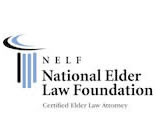Not only do you need to protect your identity from identity theft for your finances, now you need to consider protecting your medical identity. A thief may use your name or health insurance numbers to see a doctor, get prescription drugs, file claims with your insurance provider, or get other care. If the thief’s health information is mixed with yours, your treatment, insurance and payment records, and credit report may be affected.
If you see signs of medical identity theft, order copies of your records and check for mistakes. You have the right to see your records and have mistakes corrected.
Detecting Medical Identity Theft
Read your medical and insurance statements regularly and completely. They can show warning signs of identity theft. Read the Explanation of Benefits (EOB) statement or Medicare Summary Notice that your health plan sends after treatment. Check the name of the provider, the date of service, and the service provided. Do the claims paid match the care you received? If you see a mistake, contact your health plan and report the problem.
Other signs of medical identity theft include:
a bill for medical services you didn’t receive
a call from a debt collector about a medical debt you don’t owe
medical collection notices on your credit report that you don’t recognize
a notice from your health plan saying you reached your benefit limit
a denial of insurance because your medical records show a condition you don’t have.
Correcting Mistakes in Your Medical Records
If you know a thief used your medical information, get copies of your records. Federal law gives you the right to know what’s in your medical files. Check them for errors. Contact each doctor, clinic, hospital, pharmacy, laboratory, health plan, and location where a thief may have used your information. For example, if a thief got a prescription in your name, ask for records from the health care provider who wrote the prescription and the pharmacy that filled it.
You may need to pay for copies of your records. If you know when the thief used your information, ask for records from just that time. Keep copies of your postal and email correspondence, and a record of your phone calls, conversations and activities with your health plan and medical providers.
A provider might refuse to give you copies of your medical or billing records because it thinks that would violate the identity thief’s privacy rights. The fact is, you have the right to know what’s in your file. If a provider denies your request for your records, you have a right to appeal. Contact the person the provider lists in its Notice of Privacy Practices, the patient representative, or the ombudsman. Explain the situation and ask for your file. If the provider refuses to provide your records within 30 days of your written request, you may complain to the U.S. Department of Health and Human Services’ Office for Civil Rights.
Protecting Your Medical Information
Your medical and insurance information are valuable to identity thieves.
Be wary if someone offers you “free” health services or products, but requires you to provide your health plan ID number. Medical identity thieves may pretend to work for an insurance company, doctors’ offices, clinic, or pharmacy to try to trick you into revealing sensitive information.
Don’t share medical or insurance information by phone or email unless you initiated the contact and know who you’re dealing with.
Keep paper and electronic copies of your medical and health insurance records in a safe place. Shred outdated health insurance forms, prescription and physician statements, and the labels from prescription bottles before you throw them out.
Before you provide sensitive personal information to a website that asks for your Social Security number, insurance account numbers, or details about your health, find out why it’s needed, how it will be kept safe, whether it will be shared, and with whom. Read the Privacy Policy on the website.
If you decide to share your information online, look for a lock icon on the browser’s status bar or a URL that begins “https:” the “s” is for secure.
To read more about protecting yourself from Medical Identity theft and what to do if you find out that you Medical identity has been stolen go to the Federal Trade Commission Website.
* The information contained in this Blog is intended for general information and educational purposes only and does not constitute legal advice or an opinion of counsel.




